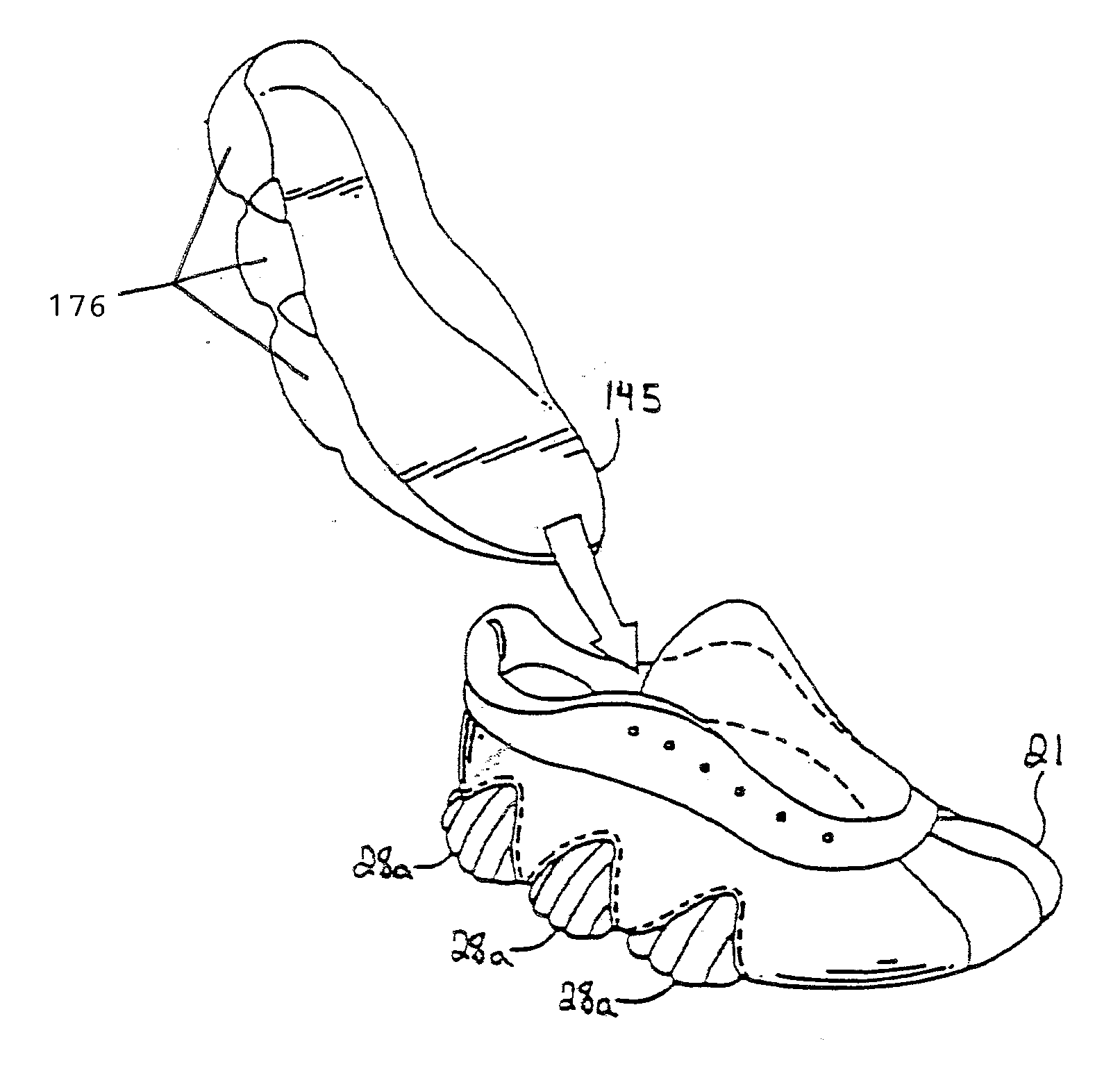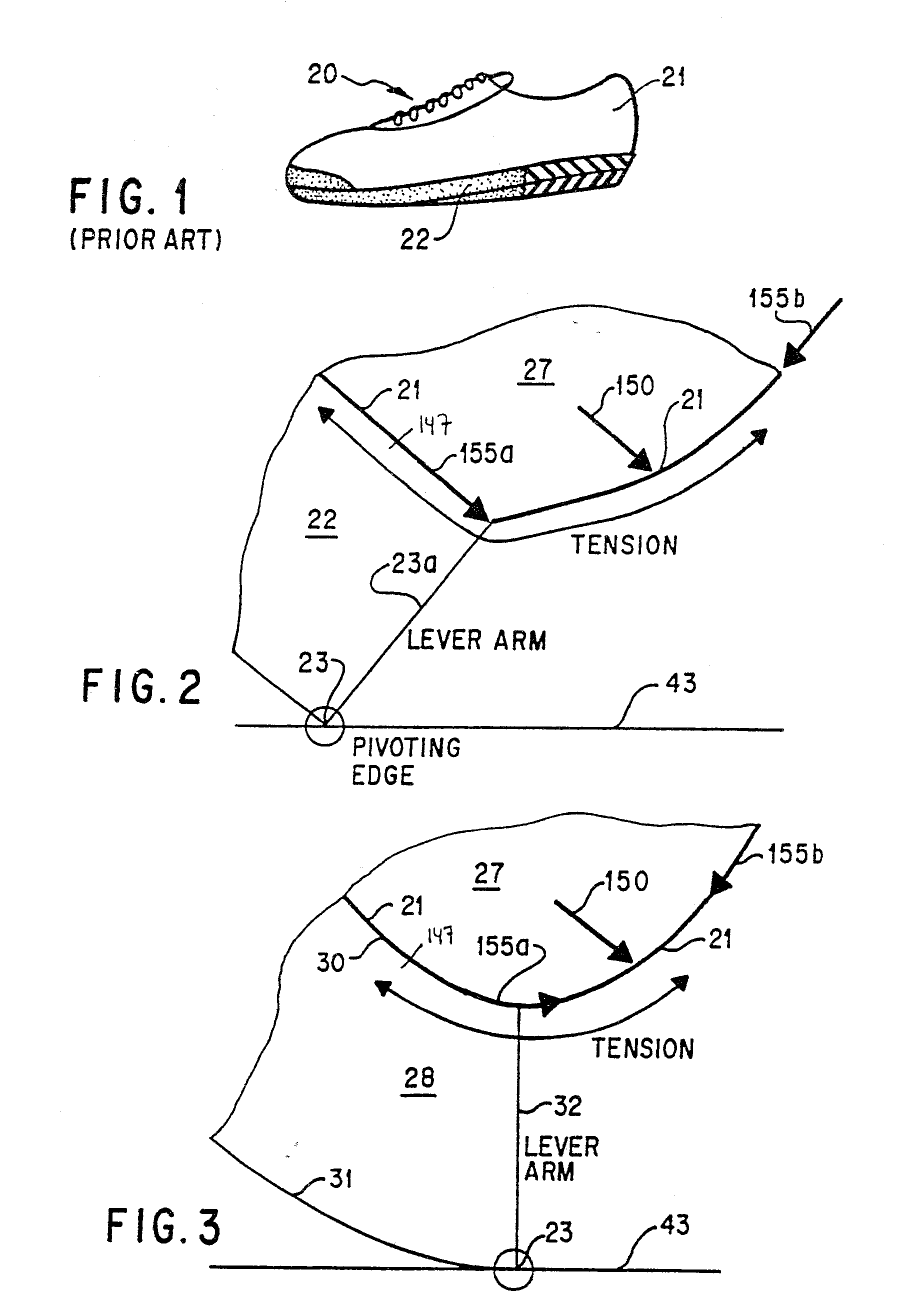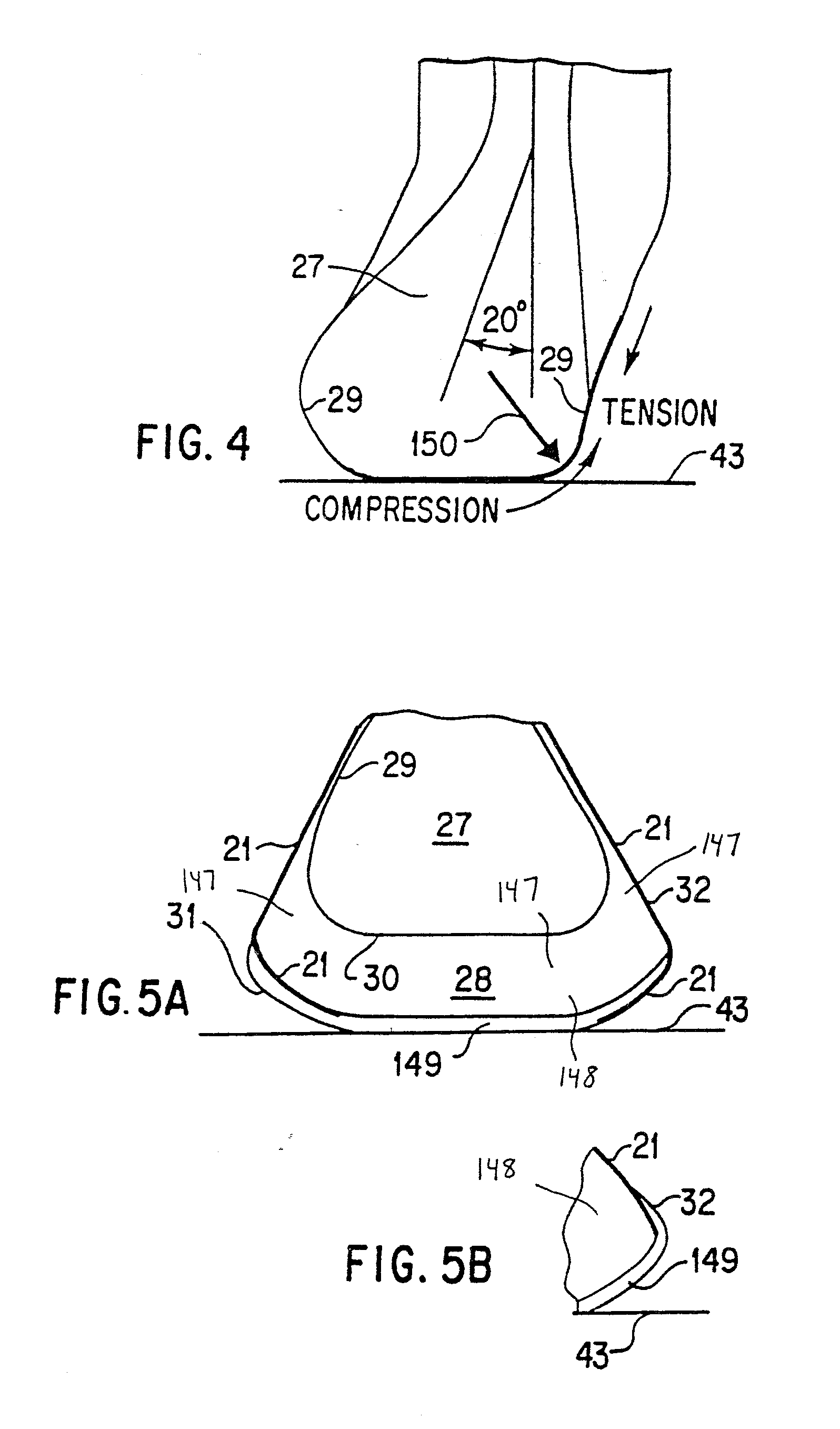Shoe sole orthotic structures and computer controlled compartments
a technology of orthotic structure and shoe sole, applied in the field of shoe sole orthotic structure and computer controlled compartment, can solve the problems of high athletic injury rate, many existing shoe designs seriously impair or disrupt the natural human biomechanics, and many existing shoe designs that are unnecessarily unsa
- Summary
- Abstract
- Description
- Claims
- Application Information
AI Technical Summary
Benefits of technology
Problems solved by technology
Method used
Image
Examples
Embodiment Construction
[0153] The present invention relates to the provision of an insertable midsole orthotic for a shoe sole which is formed at least in part by midsole material and may be removable from the shoe. The insertable midsole orthotic of the present invention is described more fully with reference to FIGS. 11A-11P below.
[0154] The insertable midsole orthotic, can be used in combination with, or to replace, any one or more features of the applicant's prior inventions as shown in the figures of this application. Such use of the insertable midsole orthotic can also include a combination of features shown in any other figures of the present application. For example, the insertable midsole orthotic of the present invention may replace all or any portion or portions of the various midsoles, insoles and bottom soles which are shown in the figures of the present application, and may be combined with or used to implement one or more of the various other features described in reference to any of these...
PUM
 Login to View More
Login to View More Abstract
Description
Claims
Application Information
 Login to View More
Login to View More - R&D
- Intellectual Property
- Life Sciences
- Materials
- Tech Scout
- Unparalleled Data Quality
- Higher Quality Content
- 60% Fewer Hallucinations
Browse by: Latest US Patents, China's latest patents, Technical Efficacy Thesaurus, Application Domain, Technology Topic, Popular Technical Reports.
© 2025 PatSnap. All rights reserved.Legal|Privacy policy|Modern Slavery Act Transparency Statement|Sitemap|About US| Contact US: help@patsnap.com



